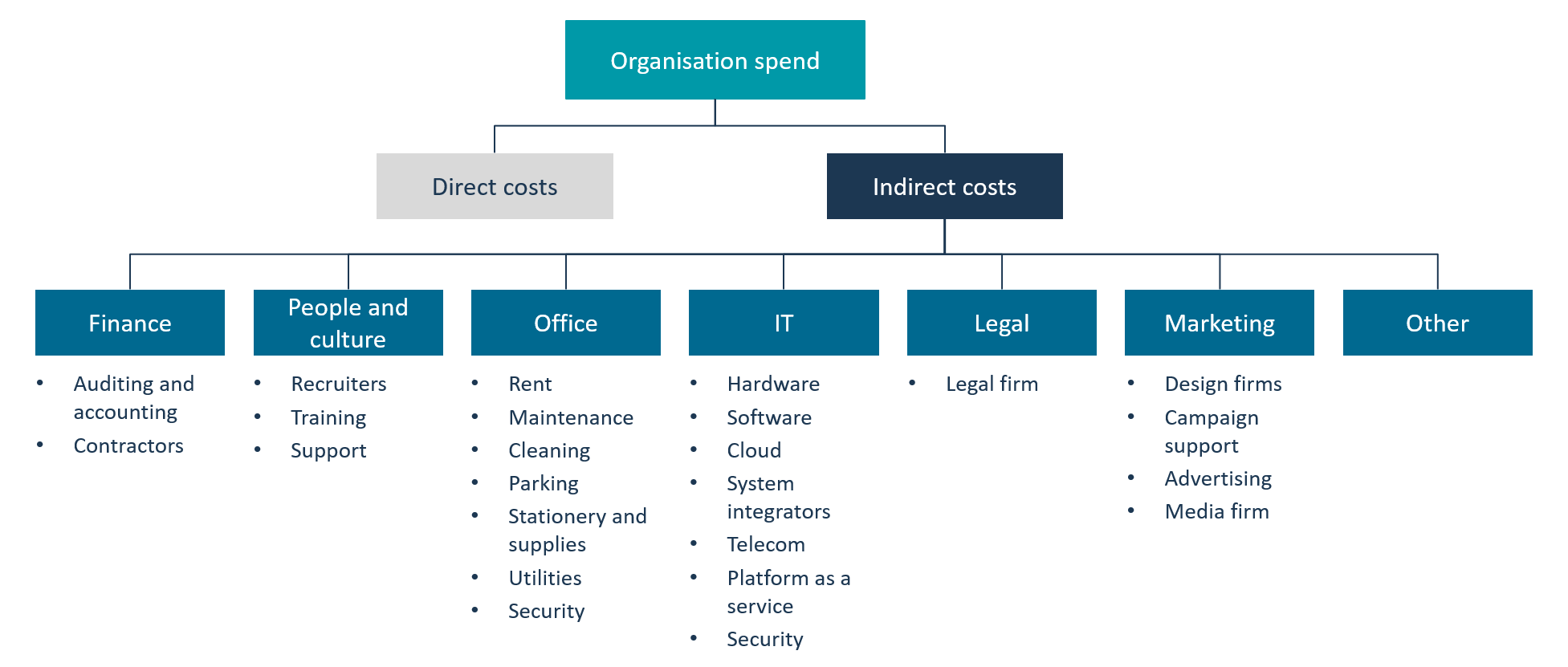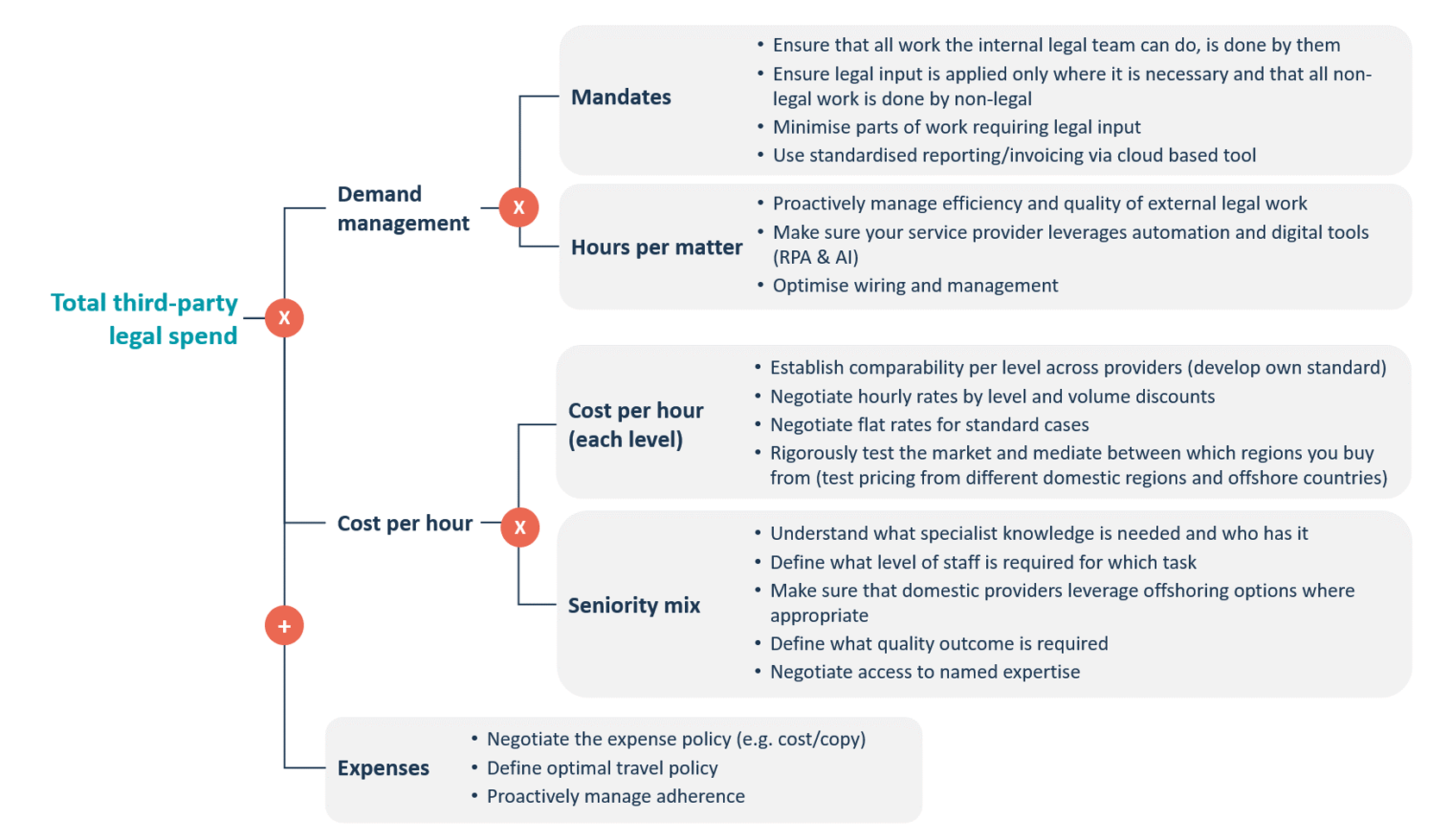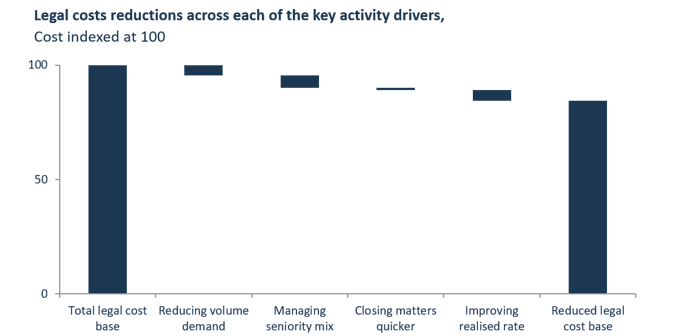Supply chain disruptions and lower revenue realisation during the pandemic remain big issues for businesses while they are struggling to survive. As a result, most organisations are taking a hard look at their cost, and procurement heads and their teams are being pressed to increase savings targets.
Traditionally, costs are either being driven by the business’s operations (direct costs) or to support business (indirect costs). Direct costs have been wound down somewhat as organisations have scaled back operations. However, indirect costs have continued to be a drain on finances, and in some cases – like cleaning and IT equipment – increased, as new processes are adopted to manage the impact of COVID-19.

While indirect costs seem to be an easy target, there are significant barriers for procurement teams to overcome. Most indirect costs are not under procurement control, but are instead managed by senior leaders in the organisation. As a result, procurement teams have little influence and often limited experience in purchasing items such as Legal, Financial Services and IT projects. Consequently, it is essential to engage key users and stakeholders to drive initiatives to reduce indirect spend – not through a redistribution of power but a different approach to engage business stakeholders.
Example approach to reduce indirect costs: third-party legal spend
When reviewing external legal costs, it is the ‘value of legal’ which should be considered rather than solely focusing on reducing costs. The value is driven by benefits and risk mitigation that legal services provide versus costs of their delivery. Benefits may enable the organisation to make faster and better commercial decisions, capture additional opportunities and meet stay-in-business compliance requirements, while the value of risk mitigation depends on how much it can affect company operations.
The objective for legal costs optimisation is to strike the right balance between benefits, risk mitigation and costs by vigorously challenging demand, specifications, rates and expenses from external providers for maximum value.
Overview of key external legal spend levers

In addition, many indirect costs – such as real estate, IT and Telecom – are bound by long-term contracts with significant termination costs or “use or lose” conditions which will restrict the immediate release of cash. As a result, these areas, though often sizeable, are difficult to navigate without significant experience and strong direction.
To overcome these challenges, procurement teams need to position themselves to have the difficult conversations now, using the current situation as a springboard to enter areas which were previously off-limit. Procurement can deliver significant benefits across a range of categories through the right engagement and commitment of relevant business partners. Strong stakeholder engagement, effective reporting and visible leadership will help deliver sustainable benefits. The platform for change and cost reduction has rarely been clearer and stronger across all indirect category spend.
Case study : 16% third-party legal spend reduction identified
Our client wanted to build an ‘overhead cost lab’ – a team and repeatable program to identify, evaluate and syndicate opportunities to improve effectiveness and reduce total costs for support functions. We were engaged to design, drive and document the pilot program with the legal team – and to identify, evaluate and document ideas to the value of 10% total legal costs.
What we did
- Developed a comprehensive fact base around legal spend
- Introduced client to best practices for managing legal spend
- Held idea generation sessions across the legal team and wider business, with both legal and non-legal representation
- Developed a refined risk and complexity assessment approach to classifying legal matters by relative risk profiles
- Built a business case for increasing the internal legal team to meet base load of legal work and reduce amount of work briefed to external parties
- Used a fact base to help develop a negotiation strategy with key suppliers, the key focus on realised cost per hour
Results
- Cost reduction ideas totalling 16% of legal spend
- High-level of engagement from the legal team and business support for the cost reduction initiatives

About the authors

SANDEEP AGARWAL
Sandeep Agarwal is a Partner at Partners in Performance, with over 18 years’ of experience in improving operations, procurement practices and supply chains. His industry experience spans mining, telecoms, heavy manufacturing, infrastructure, Oil & Gas and financial institutions, amongst others, having successfully led improvement initiatives for clients in Australia, North America, Africa, Asia and Middle East.

Inga Von Fricks
Inga manages the global Procurement Practice at Partners in Performance. She has over 14 years’ experience in commercial management and consulting with a focus on business improvement, transformation and M&A across a large variety of industries.
